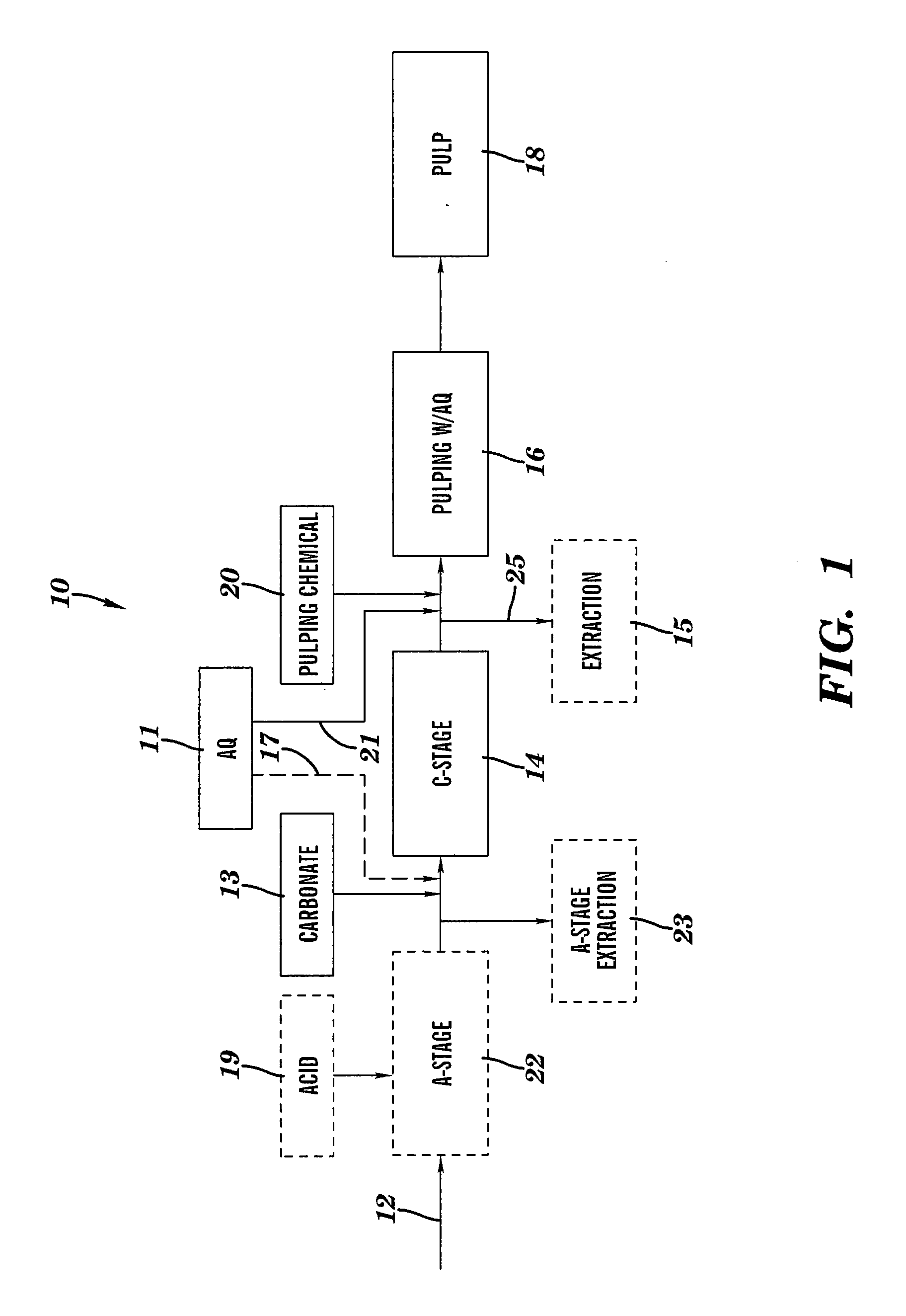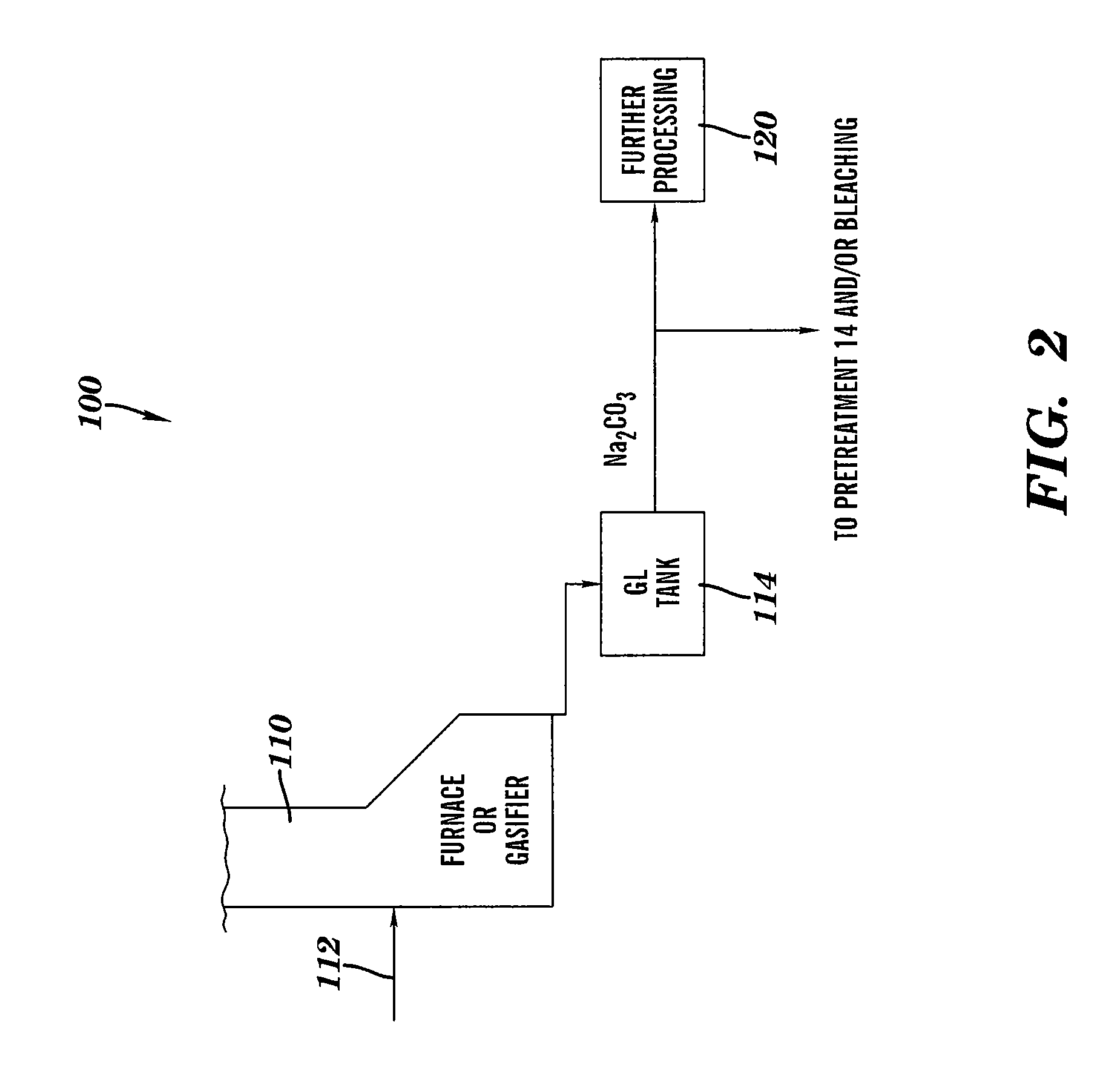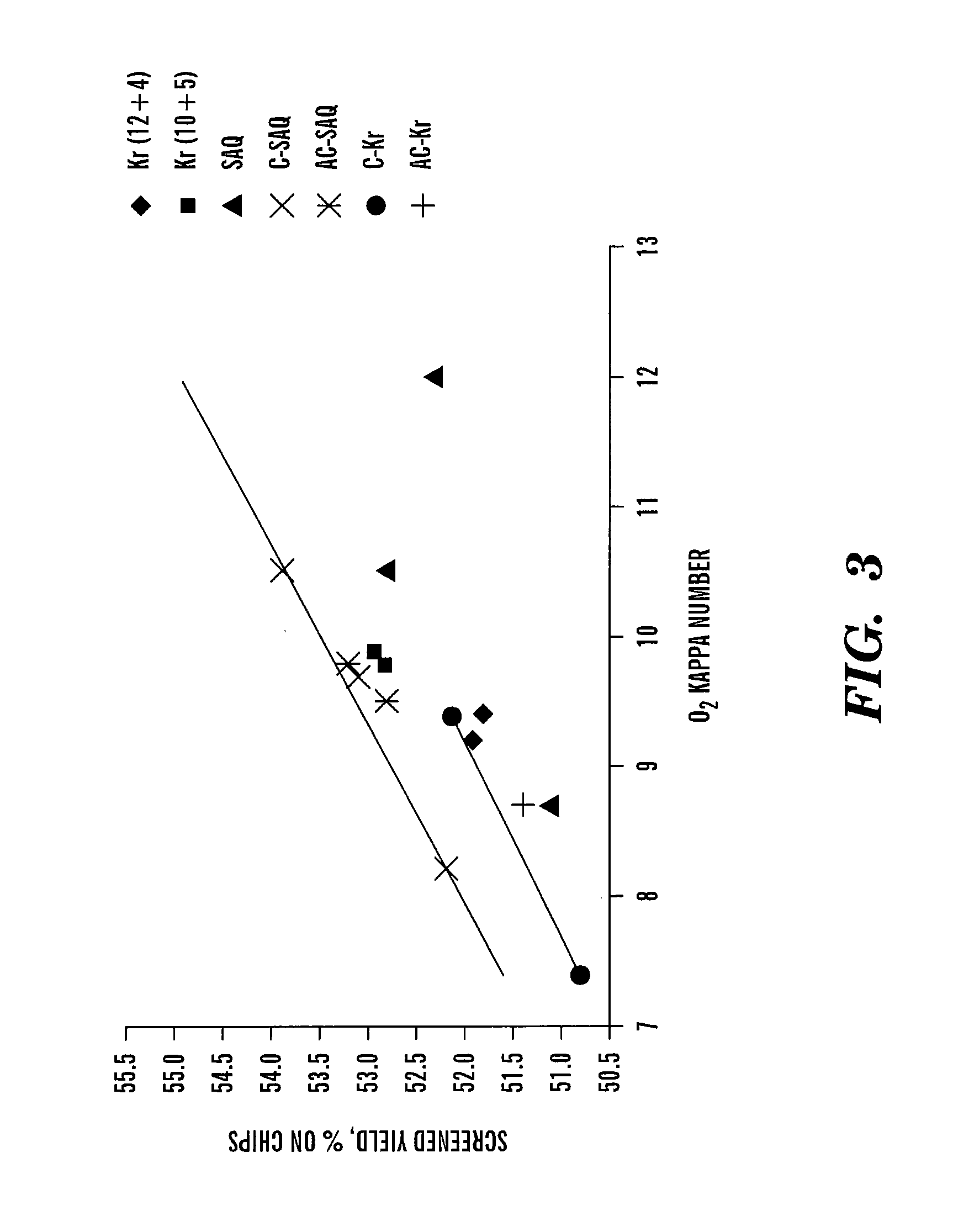Methods for carbonate pretreatment and pulping of cellulosic material
- Summary
- Abstract
- Description
- Claims
- Application Information
AI Technical Summary
Benefits of technology
Problems solved by technology
Method used
Image
Examples
Embodiment Construction
[0029] The applicants have found that by treating comminuted cellulosic fibrous material, such as wood chips, in a first pretreatment stage with a carbonate compound, for example, substantially sulfur-free sodium carbonate, and then in a second pulping stage, for example, soda pulping in the presence of an anthraquinone (AQ used to symbolize any anthraquinones),—an improved pulp can be produced. An improved pulp is also produced if the pulp undergoes an acid treatment prior to a first pretreatment stage, followed by kraft pulping in the presence of an anthraquinone. For example, the pulp produced may be characterized by increased pulp yield, increased bleachability, higher strength, and lower rejects, among other beneficial properties.
[0030] Moreover, by treating the chips with a solution containing carbonate prior to treating the chips with pulping chemical, the amount of pulping chemical required in the pulping process for a desired treatment may be reduced. This development can ...
PUM
| Property | Measurement | Unit |
|---|---|---|
| Fraction | aaaaa | aaaaa |
| Fraction | aaaaa | aaaaa |
| Fraction | aaaaa | aaaaa |
Abstract
Description
Claims
Application Information
 Login to View More
Login to View More - R&D
- Intellectual Property
- Life Sciences
- Materials
- Tech Scout
- Unparalleled Data Quality
- Higher Quality Content
- 60% Fewer Hallucinations
Browse by: Latest US Patents, China's latest patents, Technical Efficacy Thesaurus, Application Domain, Technology Topic, Popular Technical Reports.
© 2025 PatSnap. All rights reserved.Legal|Privacy policy|Modern Slavery Act Transparency Statement|Sitemap|About US| Contact US: help@patsnap.com



